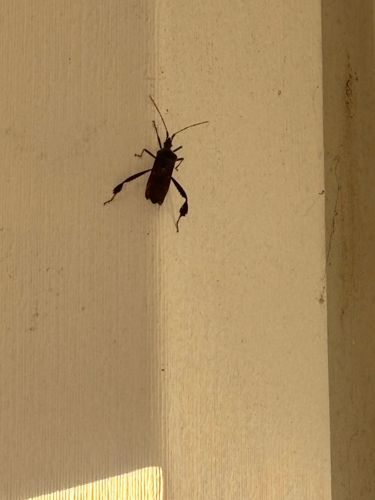Leaf-footed Bug
Scientific Name: Acanthocephala spp. or Leptoglossus spp. (e.g., Anasa tristis for squash bugs, a closely related pest)
Order & Family: Hemiptera (Order), Coreidae (Family)
Size: Typically 15-40 mm (0.6-1.6 inches) in length, depending on the specific species. They are generally robust and elongated.

Natural Habitat
Found in agricultural fields, gardens, orchards, woodlands, and natural areas where host plants are abundant. They are widespread in tropical and temperate regions globally.
Diet & Feeding
Mainly phytophagous, feeding on the sap and developing seeds of a wide range of plants, including fruits, vegetables, ornamentals, and weeds. They use their piercing-sucking mouthparts to extract plant juices.
Behavior Patterns
Adults are active during warmer months, often found on or near host plants. They can fly, and are attracted to lights at night. Females lay eggs on host plants, and the nymphs develop through several instars, feeding on sap. Some species can produce defensive odors when disturbed.
Risks & Benefits
Risks: Considered agricultural pests due to their feeding habits, which can cause significant damage to crops, leading to fruit distortion, seed abortion, premature fruit drop, and wilting. Benefits: In certain ecosystems, they can be a food source for birds and other predators. However, their pest status generally outweighs any ecological benefits perceived by humans.
Identified on: 8/22/2025